Types of Equipment
FOR HOME OR BUSINESS phone 1300 040 362
All equipment supplied & fitted by our certified, qualified technicians.
FIRE EXTINGUISHERS
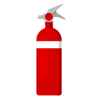
When it comes to extinguishing a small fire, time is critical. Having a fire extinguisher that will work and is accessible is critical to occupant safety and building protection. Fire extinguisher selection, location, size and quantity are all determined from section E1.6 of the Building Code of Australia (BCA) and Australian Standards AS 2444 and is based on the level of risk and type of fire expected in any given building.
SHOW MORE
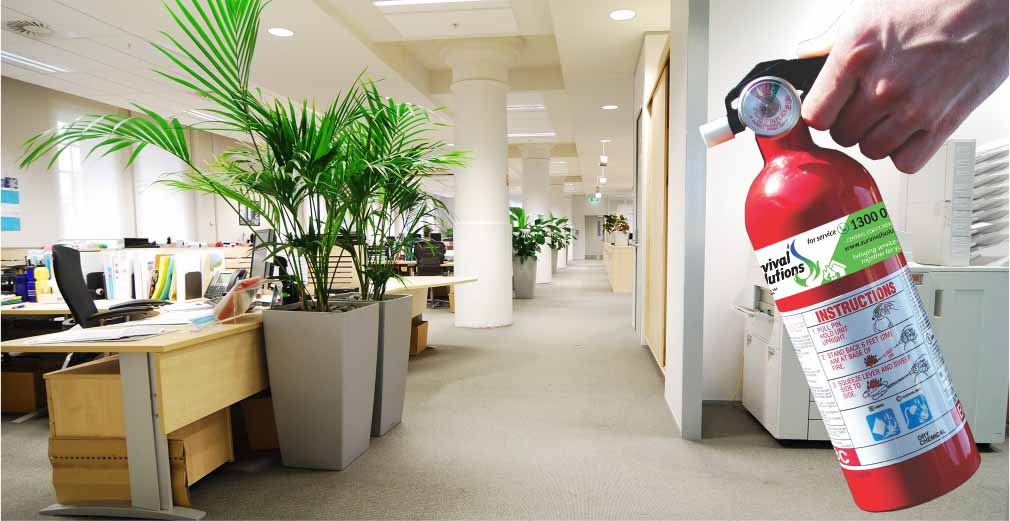
Extinguishers to suit all types of fire with a variety of applications.
Time is critical when it comes to extinguishing a fire in its early stage of development.
You must have the correct type of extinguisher in place to contain the expected risk.
The fire extinguisher or location sign must be highly visible from no more than (18) eighteen metres.
Your fire extinguisher must be functioning and fully charged at all times.
You and your staff must know how to use your fire extinguisher safely.
Survival Solutions can help you select the correct type and quantity of fire extinguisher for your needs, installing on site and certifying.
To use: Pill the safety pin with slight twist, ensuring you are not jamming the pin. Aim at the base of the fire and burning fuel squeeze the handle sweep side as required.
Tips on Use: Always take one or more extinguisher when investigating and automatic fire alarm. Always have replaced or recharged if used. Lay on the side if used.
Extinguisher Type Location & Size: Australian Standards (AS) 2444 is used to determine the selection, location and quantity of fire extinguishers required for a given building type and is quite varied based on the level of risk and type of fire expected.
Carbon Dioxide is less messy, with no residue or powder after discharge, but will not extinguish a carbonous (wood, paper, cardboard. textile material or plastic) fire and has limited effectiveness, particularly outdoors.
Whereas ABE Dry Chemical Powder is very effective at containing most fires including (wood, paper, cardboard, textile material, gas, flammable liquids and plastics) it is a very messy, with corrosive potential and will take some time to clean up. (NOT SUITABLE FOR AVIATION)
How many extinguishers do you need?
Determining the number & type of extinguisher is not an exact science, dues to the different types. However, a good average for assessment is one fire extinguisher for each 200m2 of floor space and a maximum distance from any extinguisher not to exceed 18 metres. If you have less than 200m2 we recommend a minimum of two extinguishers in case one of them fails to operate.
In some cases, when the building is a large and sprinkler systems exist this rule is not accurate.
Fire extinguisher shall be installed between 200 and 1200 mm above the floor, with identification and location signage installed above.
Survival Solutions can design, install, pressure test and service all types of fire extinguishers, including large wheeled and automatic types.
SHOW LESS
FIRE BLANKETS
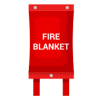
The purpose of fire blankets is primarily to extinguish cooking type fires where the blanket can prevent oxygen from getting to the fire and therefore extinguishing it.
Fire blankets also have limited use in extinguishing a person whose clothing has caught fire.
Fire blankets come in a variety of sizes from 1m2 to 1.8m2 and must be replaced if used.
Ensure that the installation of both fire extinguisher & fire blankets in domestic or cooking situations is located well away from the likely source of fire (2 metres min) and preferably near the exit from the kitchen.
If you use a fire blanket on a cooktop be sure to turn the gas or electricity off.
FIRE HYDRANTS
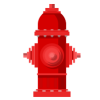
Fire Hydrant Systems are installed to provide the Fire Brigade with adequate water to contain a building fire and provide protection for fire fighters in search and rescue.
Hydrant systems range in size and complexity depending on the nature & type of the building they serve.
The design, installation and maintenance of hydrant systems is very technical and requires specialist skills to get it right.
Survival Solutions is the right choice when it comes to getting the facts on hydrant system design, installation, maintenance, flow testing and certification.
If you are considering building and are not sure about hydrant system requirements we can provide advice, which in a few minutes could save you tens of thousands of dollars.
We also have qualified plumbers who can maintain, repair, install & certify your existing system, including annual flow testing with our calibrated and certified ambit flow and pressure testing equipment.
FIRE HOSE REELS
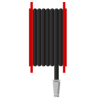
Fire Hose Reels are installed in many buildings, either inside or out. They are designed to assist building occupants extinguish a substantial A class fire or assist with evacuation.
Fire Hose Reels or FHR for short are manufactured by many different companies but all have the same purpose. They contain 36 metres of hose, a discharge nozzle to control spray, a locking device and stop cock or tap.
SHOW MORE
FHR's are generally only required in a building when a fire compartment exceeds 500m2 (not the total area), whereby they can be located nywhere on the outside of the building or inside with 4 metres of an exit.
Fire hose reels should reach all areas within the required building, taking into consideration obstacles such as racking or machinery.
FHR should be in such a position that there is a minimum 1 metre clearance around them, allowing for quick access and use if required.
Why do fire hose reels fail and require replacement?
When serviced by Survival Solution we leave the hose in the locked position so that anyone using it must first turn on the stopcock before the nozzle can be removed.
They are not a robust device and the rubber hose is quite soft and therefore should not be used for any other purpose other than firefighting. When unwound, and rewound by inexperienced users they often get tangled and do not re-lock the nozzle.
Survival Solutions can design, supply, install, maintain and certify fire hose reel systems, cabinets and UV resistant heavy duty PVC covers for all applications.
SHOW LESS
EXIT & EMERGENCY LIGHTING

Exit and Emergency lighting is a critical aspect in protecting life in the event of a fire or emergency. Exit and emergency lighting, installed and maintained in accordance with AS 2293.1 & 2, provides an illuminated path of egress from the building to nominated exits and emergency assembly areas.
There are many different types of exit and emergency lights that are designed to function when power has failed.
It is critical for building occupant safety that the correct type and quantity of lights are installed in the correct locations, and that they are functioning.
SHOW MORE
HANDY TIPS & INFORMATION
Exit and emergency lighting is required when a fire compartment within a building exceeds 300m2.
When properly maintained, exit and emergency lights have a life cycle of seven (7) years. Expect around 15 percent failure per year.
Exit and emergency lights are designed to function without power and are tested by disconnecting the power supply for ninety (90) minutes.
Most exit and emergency lights fail due to faulty power converter (PC) boards, not batteries, and generally will require replacement in such cases.
Survival Solutions specialises in the design, installation, maintenance, repair and certification of exit and emergency lights and can provide you with the right advice or support.
SHOW LESS
SPRINKLER SYSTEMS
MONTHLY SPRINKLER TESTING IS NOW LEGAL
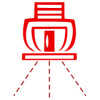
Did you know that with the right advice and monitoring of pumps and isolation valves you can change your weekly sprinkler testing to monthly, saving thousands in inspection fees. Survival Solutions understands the need to save money whilst remaining safe and compliant, but advocates more cost effective methods.
SHOW MORE
Sprinkler Systems can be automatically or manually operated to suppress the spread of fire and can transmit an alarm to the fire brigade via an automatic fire alarm system and potentially control a fire, meaning the difference between a minor and major incident, causing the loss of life and property.
There are many different types of sprinkler systems including industrial and commercial sprinklers, wall wetting drenchers, deluge systems and domestic sprinkler systems. These systems are designed to extinguish or stop the spread of fire in part or all of a building or plant and can be simple systems supplied from town’s main pressure through to large systems with electric and diesel pumps as well as boosters supplied from water storage tanks.
Survival Solutions specialises in the delivery of fire sprinkler maintenance, upgrades, minor installations, compliance audits and annual certification of all types of sprinkler systems, through our team of licensed, qualified and insured sprinkler fitters.
SHOW LESS
FIRE DOORS, FRAMES & HARDWARE
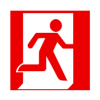
Survival Solutions Can provide a range of fire door solutions to meet the requirements of the Building Code of Australia, AS 1905.1 2005 & AS 1851.
The design, installation and certification of fire doors must be carried out by suitably qualified technicians, however regular inspections can be carried out by building occupiers, thus reducing on inspection cost.
Survival Solutions advocates an annual inspection resume for fire doors in occupied units to coincide with the issue of AFSS to councils. As everyone knows it can be a difficult process to gather all building occupants at the same time to carry out inspection and we believe more sustainable to check doors once per annum. This rule does not apply to doors in common area where high traffic and damage can occur with anyone noticing. In this circumstance, we offer a bi annual inspection.
SHOW MORE
The general purpose of passive fire protection systems and fire doors are a cost-effective approach to limit the spread of fire and smoke within a building or facility. The purpose of passive fire protection including fire doors in buildings is to assist in the fire separation of fire compartments, with the primary objective to protect occupants in the event of evacuation, followed by minimising the spread of fire from one compartment to another and therefore reducing building damage.
Passive systems including fire doors and frames are used whenever an opening is required through a fire wall, floor or ceiling for services such as pipes, ducts, cables, inspection panels, light, observation or human entry. In these situations, the service must be sealed in such a manner that the fire resistance level or rating of the element of construction is maintained. Passive products and systems are used to close off gaps in floors and walls between services, around cables and pipes, around ducts and in control joints.
SHOW LESS
SMOKE ALARMS - BATTERY, 240V & WIRELESS
Smoke alarms are designed to achieve one thing, get humans out alive. Smoke alarms are devices that have the sounder built into the detector and will activate in the presence of smoke or heat.
History: Over the years we have all been encouraged to install smoke alarms as an early warning of fire, which can be particularly dangerous when asleep. The legislation now makes it mandatory to have working smoke alarms in a rented building and new homes.
Smoke alarms can come in 240 volts hard-wired electrical and battery, stand alone or inter-connected.
Photo optical alarms are far better in regards to protecting your home and family. If you are not sure what you have you should consider purchasing a couple of battery operated photo optical alarms from a local hardware store or supermarket and installing them in addition to any alarms; you may already have. Smoke alarms can be installed quite easily with double sided tape, remembering to connect the battery first.
SHOW MORE
There are two main types of smoke alarms:
Ionisation Smoke Alarms For the most part, the only type of smoke alarm available was ionisation smoke alarms, which met the sensitivity requirements of the standards. However expert analyses and testing believes they do not provide sufficient protection from a smouldering fire which is the most typical scenario in most homes, and most certainly the most likely. Ionisation smoke alarms are also most likely to cause false alarms, which is the main reason building occupants remove the batteries.
Photo Optical Smoke Alarms All Australian fire authorities and Survival Solutions recommend the installation of photo electric smoke alarms now. These types of smoke alarms are designed to identify smouldering fire for hours before flames occur, providing plenty of early warning for investigation, evacuation and brigade contact.
If you have any questions regarding smoke alarms in your home, please send us a request for information
here
SHOW LESS









